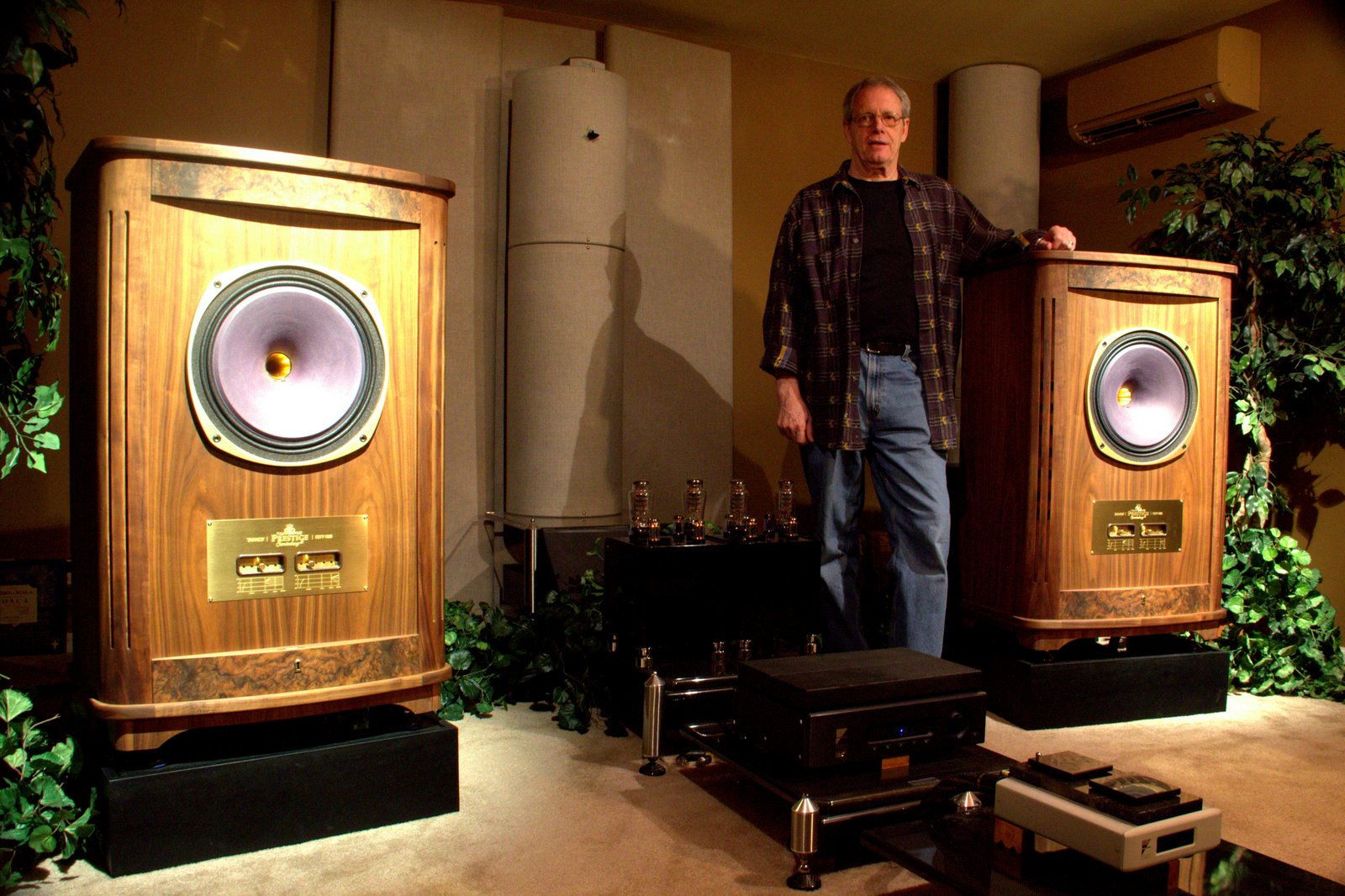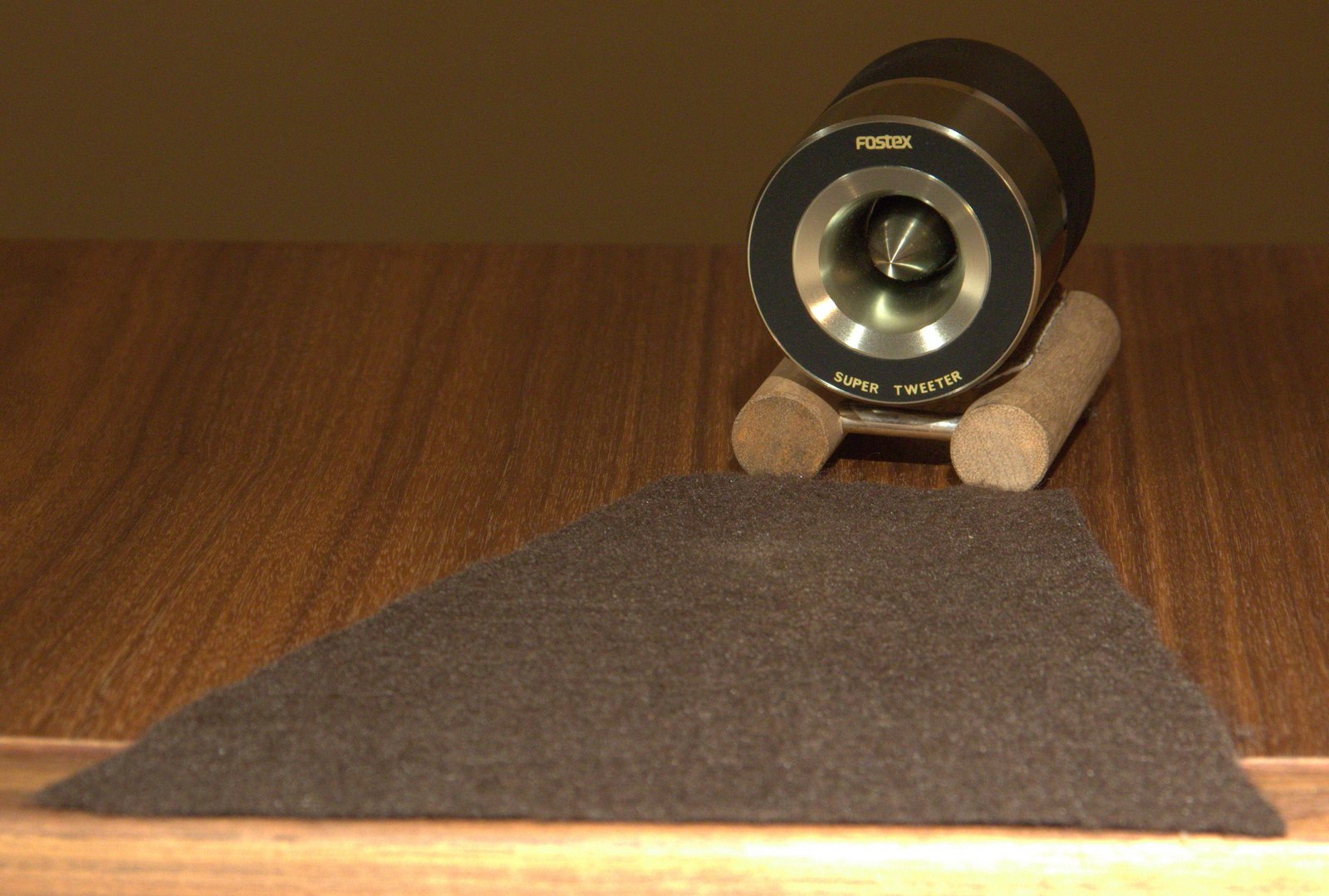It is always a pleasure to hear from Jim Smith. As I said in the article I wrote for Positive Feedback Online in Issue 59 about Jim's Get Better Sound reference 3 DVD set, "I suspect nearly everyone reading this article will already know about Jim Smith's expertise in Hi-Fi system setup and voicing, as his reputation has become legendary. Just in case there's a few who still don't know about Jim, let me give you a micro-bio about his background: Jim Smith has been in the Hi-Fi business for over 35 years, has worked for manufacturers like Magnepan and Audio Research, has owned his own retail business for high-performance Hi-Fi gear, has imported exotic Hi-Fi gear from other countries to North America as a distributor, has recorded live music performances in his community, and has served as a consultant to numerous high-end marquees." (if you haven't yet read that article you should go back and read it)
Like quite a number of us who stop in at Jeff's Place, Jim likes his Tannoys, and when Jim sent me an e-mail and suggested that we start a dialog here at Jeff's Place about supertweeters and Tannoys I thought it was a great idea. Many thanks to Jim for opening up the discussion on supertweeters and Tannoys! Here's what Jim wrote to get the discussion going: (Jim in his listening room below)
"You mentioned that you could create a post to discuss super-tweeters, ostensibly for Tannoys, but the info is probably applicable to others as well.
I wrote in a Quarter Notes newsletter (to Get Better Sound owners) about my experience with several different super-tweeters for the Tannoys. I thought that here I might give a bit more detail, as well as offer some relevant images.
Here is what I wrote about my experience with super-tweeters in that newsletter. I'll omit the topic that came just before it, because it was not about super-tweeters, but technical aspects of speaker/listener placement and measurements vs. the most musically involving sound - sometimes you can have both and sometimes it appears not:
Another instance of technically correct set-up at the expense of the music.
Again, without revealing too much about my system at this time, I decided that it might benefit from having outboard super-tweeters. The first pair I tried, simply were not a good match, mostly due to efficiency.
So then I tried some really exotic super-tweeters. These had high efficiency (so that I could carefully turn them down in level to match my main speakers). They were 8 ohms, like mine. They used Alnico magnets like mine. I came up with a fairly sophisticated means of dialing them in. I was cutting them in at about 16,000 Hz, and they went up to somewhere way beyond what I can measure (spec’d to at least 50 kHz).
I managed to get them time and phase aligned. When playing music, you could not detect any change in tonal balance. And yet, they defied logic, as various instruments, including voices, seemed noticeably cleaner, especially so on leading edges of transients.
This was super exciting sound! Everyone who heard the system (including a well known industry set-up guy) said it was by far the best sound they ever heard, at any price.
This all took place after my findings about the bass in the room.
One night, maybe around 1 AM, I was up listening and reveling in my sound. I was skipping around, enjoying the sound of virtually every cut I played.
Then it dawned on me. I was listening to sounds! When I voice a system, I do it with the primary aim that it will deliver the goods in a powerfully musical way.
Certainly after my discovery with the bass, you’d think I wouldn’t fall for the same thing twice, but I did. Maybe I’ll blame it on all the meds post-surgery. Or not …
I decided to cover up the super-tweeters with a couple of thick towels. Next thing I knew it was after three o’clock as I had once again fallen into the music. Then I disconnected the super-tweets and removed them from the room. I listened to MUSIC until almost daylight.
I’ll never forget that awakening. We can have technically precise sound that may be exciting on the basis of its sound, but if it is at the expense of having each piece of music speak to us, what good is that?
So I’ve decided to see what I can do to help audiophiles to think about - and to voice their systems – to strengthen that ear-to-heart connection.
In the interests of not being product specific for my readers, I didn't mention the Tannoy Canterburys as my speakers in that issue of Quarter Notes, but they were in fact the speakers I used.
I tried a number of super-tweeters. I don't see the need to name them here, as I found that my general observation applies to most of them. They were the usual suspects. 🙂
The thing is that I now wonder if I could have made a mistake in my thinking regarding their installation. So I thought that maybe someone can point out something that I did that was incorrect.
One of my early concerns was related to the diameter of these super-tweeter diaphragms and their frequencies as related to dispersion.
For example, any driver that plays frequencies whose wavelength is smaller than the diameter of the driver will beam all of the frequencies above that wavelength straight ahead (no dispersion at all). Another way to look at it is that with a 1 inch diameter tweeter, all frequencies above 15 kHz will be beamed straight ahead.
If I put the super tweeter on top of my Canterburys (which are off axis 14.5 degrees from my seat), then what good would the super tweeter be? I certainly would not get any supersonic effects as they are all being beamed away from me!
So I listened to and calibrated the super tweeters three ways:
(1) Standard - off axis. (as viewed from the listening position)
(2) Aimed directly at each ear's horizontal axis.
(3) - Tilted down to aim directly at each ear.
I have attached some images that should go with each type of set-up.
I should note that before I ever got around to super-tweeterrs, I determined the correct toe-in for the Canterburys in my room.
At 15 degrees, the sound was a shade too laid back.
At 14 degrees, the sound was a shade too aggressive.
I settled on 14.5 degrees. How do I know? I built my own protractor for my Canterburys, so I could measure the setting that I finally chose.
And so when I added the super-tweeters, I was NOT going to change the toe-in for the Canterburys.
FWIW - only when I aimed the tweeter at my ear did I finally hear an interesting effect, once I got the drivers time-and-phase aligned.
The effect was an increase in heading edge detail, all the way down into the upper bass! Note that this was with the tweeters toed in and aimed at ear level. With the tweeters set up, the tonal balance was exactly the same once I finally got the super-tweeters dialed in.
And interestingly enough, the benefit of putting my home-made felt mat on top of the Canterburys, in front of the super-tweeter was not just audible, but measurable (about 1 dB down with the felt mat at 12 kHz).
Anyway, as I mentioned in the Quarter Notes letter, in spite of having the super-tweeters dialed in so that there was no difference in tonal balance on music, I ended up feeling the musical impact suffered. I want to give a shout-out to Ron Williams for lending me his Fostex Super-Tweeters for the images - thanks Ron!
So what did I do wrong?"
Ok everyone, let us know your thoughts!






































